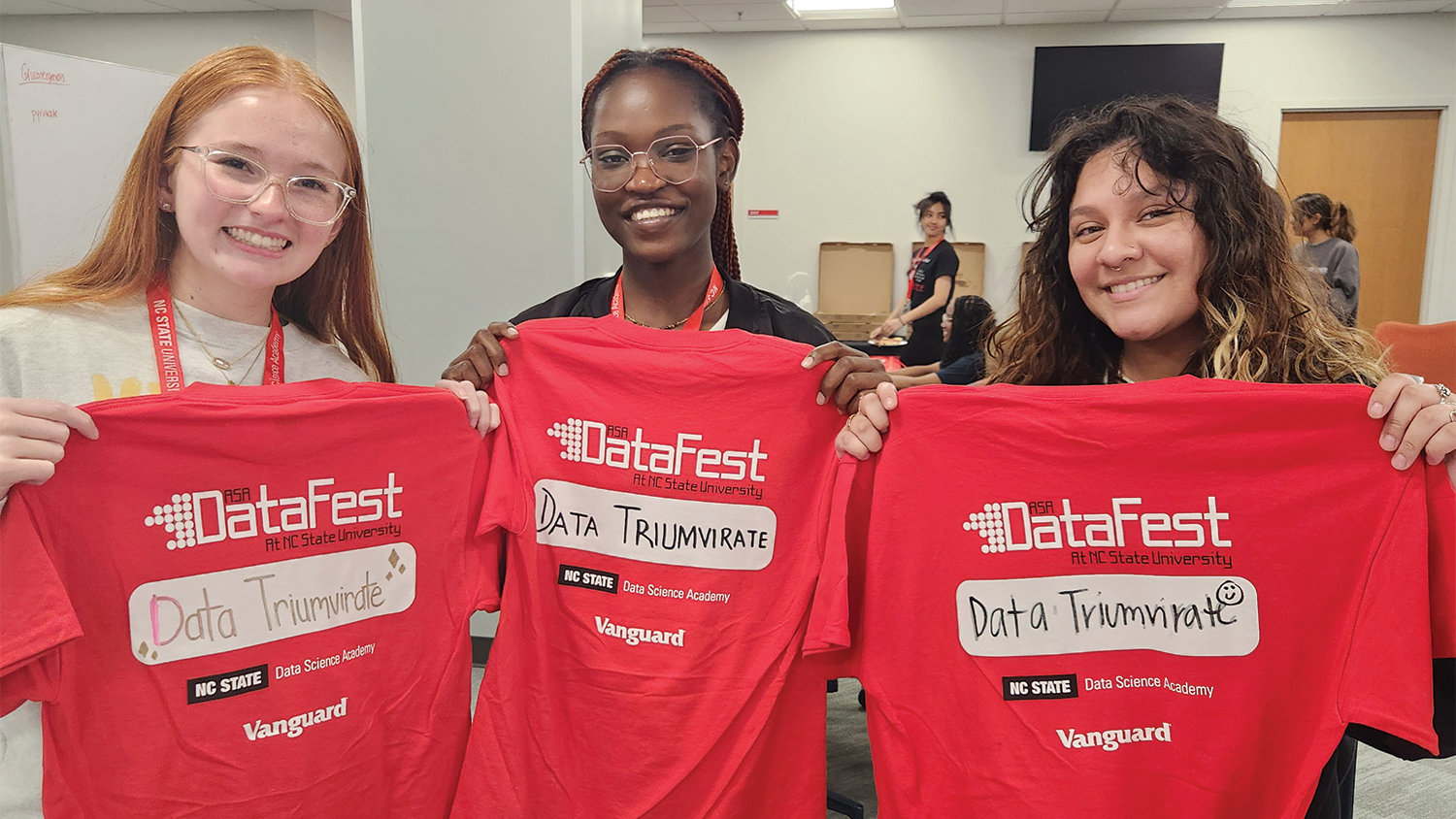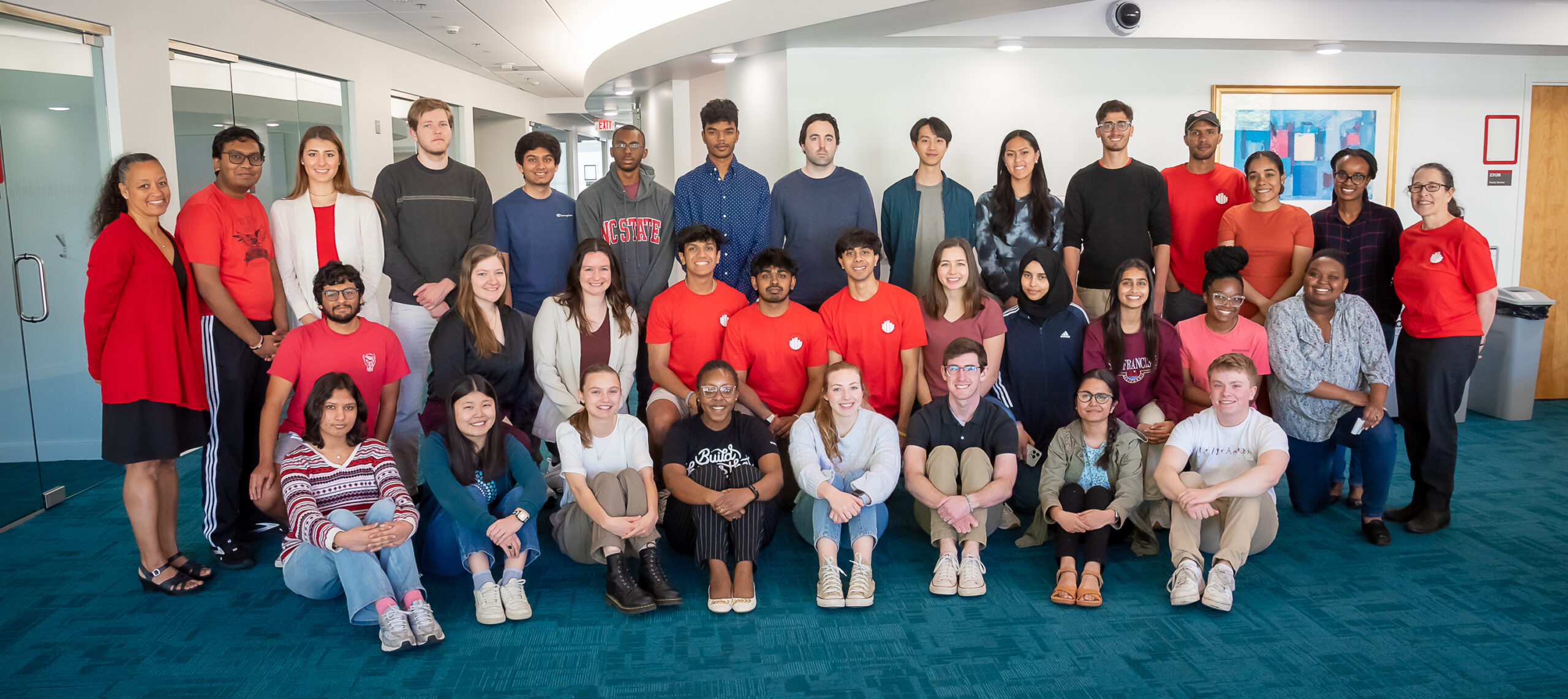Data in Bloom
NC State Data Science and AI Academy Postdoctoral Fellow, Kelsey Virginia Dufresne, explores the role of flowers, art, and community in data science by participating in and creating a floral installation for the North Carolina Museum of Art’s (NCMA) 2025 Art in Bloom fundraiser.
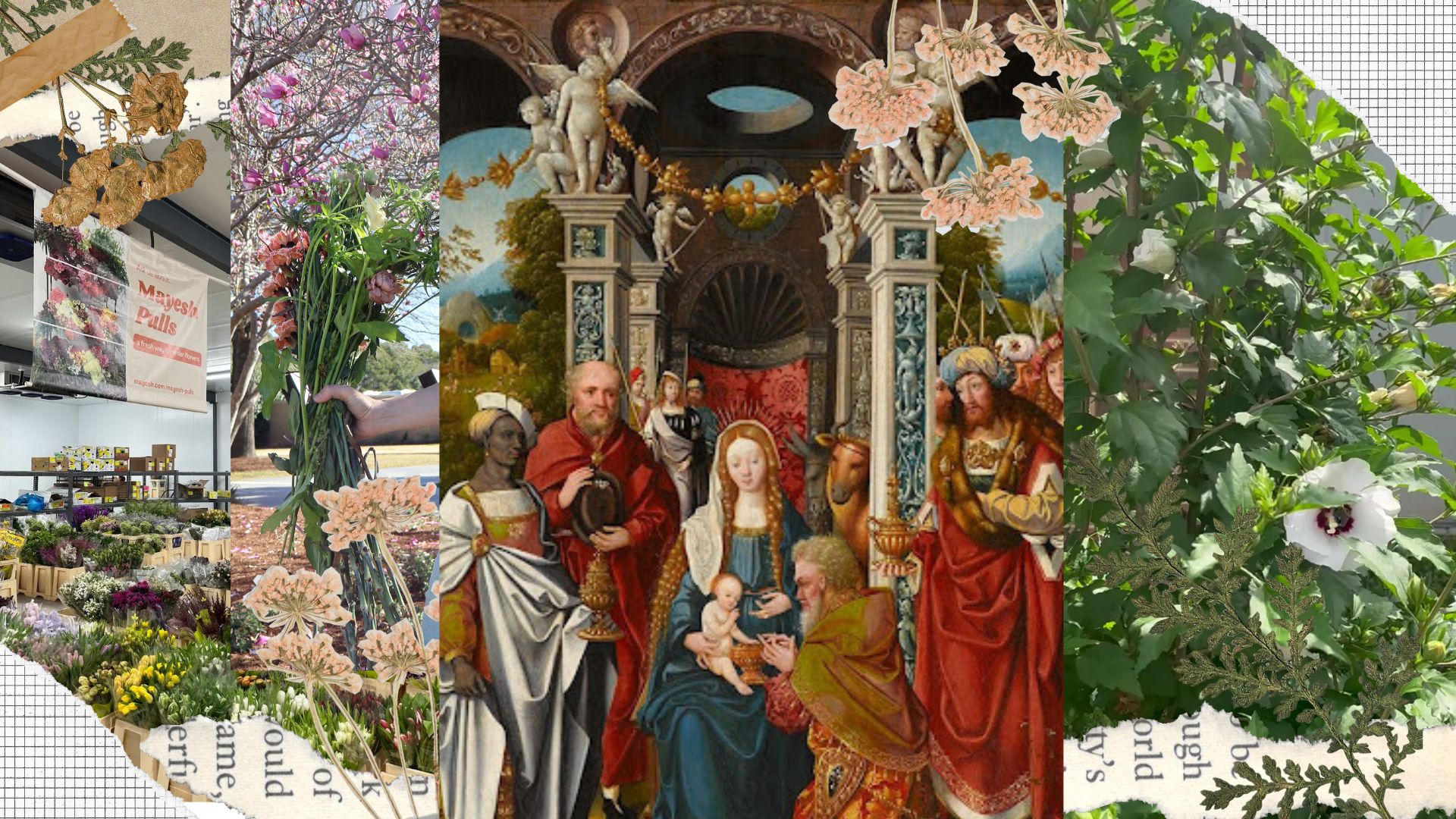
For one week each year, the North Carolina Museum of Art (NCMA) brings nature into its galleries and places flowers on display throughout its exhibits. With dozens of floral arrangements designed to accompany different art pieces throughout the Museum, the Art in Bloom fundraiser provides an invaluable instance of engagement centered around art, flowers, and community.
I first attended Art in Bloom in 2018. I was a few months away from graduating with a degree in English Education and looking forward to starting graduate school to focus on American Literature. Having been annually since, I love seeing flowers celebrated so vividly. But I mostly love seeing how excited people are in a museum space– seeing people crowd around a painting because a floral arrangement sparked interest, or looking more closely at the textures in a sculpture highlighted in an arrangement’s vase. Experiencing crowds of people excitedly engaging with art in this way is so different from how we might typically view art in quiet, solemn places with hushed voices.
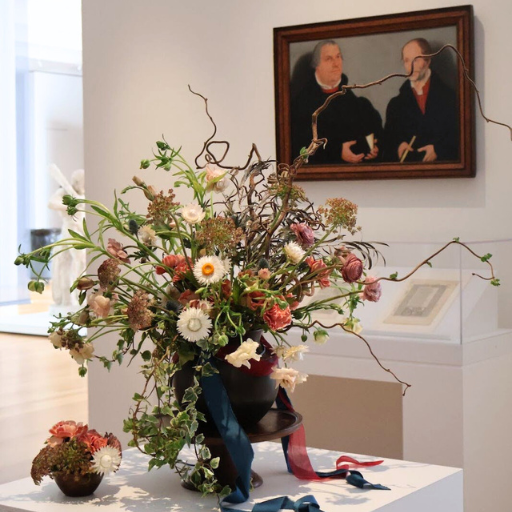
Because I love art, flowers, and Art in Bloom, the first peer-reviewed article I published focused on these things, and I have often written about how the fundraiser event is a fantastic example of the power of flowers.
In 2024, I became a postdoctoral fellow with the NC State Data Science and AI Academy (DSA) with a focus on data science and AI education. I was curious: how might these floral arrangements, designed to take inspiration from a specific piece of art, serve as data physicalizations or tangible displays of data and engagement?
With my background in English literature and the humanities, I viewed data science through the lens of data humanism. Data humanism is a framing of data science coined by Giorgia Lupi that emphasizes people, context, subjectivity, and messy, imperfect small data. As someone who had never engaged with data science before, this framing resonated with me because it presented data science in a way that aligned with how I was taught to engage with stories, poems, and books.
Data humanism offers another way to engage with Art in Bloom’s floral arrangements and situate them as data physicalization installations. These installations are rooted in the perspective of the designer, which challenges traditional expectations of how to engage with art, with data, and with what counts as both.
Through the lens of data humanism, Art in Bloom’s floral arrangements aren’t simply floral versions of art, but displays of engagement, indicators of color and visual analysis, and highly subjective instances of understanding made physical and sensory through the use of flowers. Here, not only is beauty in the eye of the beholder, but so is data.
To explore this further, I participated in Art in Bloom as a floral designer, purposefully designing from the perspective of one working in data science education to explore what happens when we place art, flowers, and data science in conversation with each other.
Data-Driven Florals
In 2023, I contacted NCMA to learn how to be a floral designer and Art in Bloom participant. At that point, my name and email were added to a list. In the early autumn of 2024, I received an email asking me to note a date and time to apply to be a designer. When that day came, the application closed within 15 minutes–I applied with three minutes to spare.
From there, the designers and I randomly selected art pieces from blank envelopes in a brown bag. I selected the fourth envelope from the left and was assigned to work with Simon Claasz. van Waterlant II’s The Adoration of the Magi.
After receiving my assignment, I began planning. While I had never created a professional-level floral arrangement, I was motivated by my goal to construct data-informed art. Taking what was most obviously present to me, color, I began deconstructing the piece into fragments of data that translated into color codes and data points.
Firstly, I used Palette Generator, which creates a color palette of the most predominant colors. For this piece, the palette included varying shades of brown. Secondly, I looked at which colors stood out to me as the viewer: olive greens, blues, and deep velvety reds and browns.
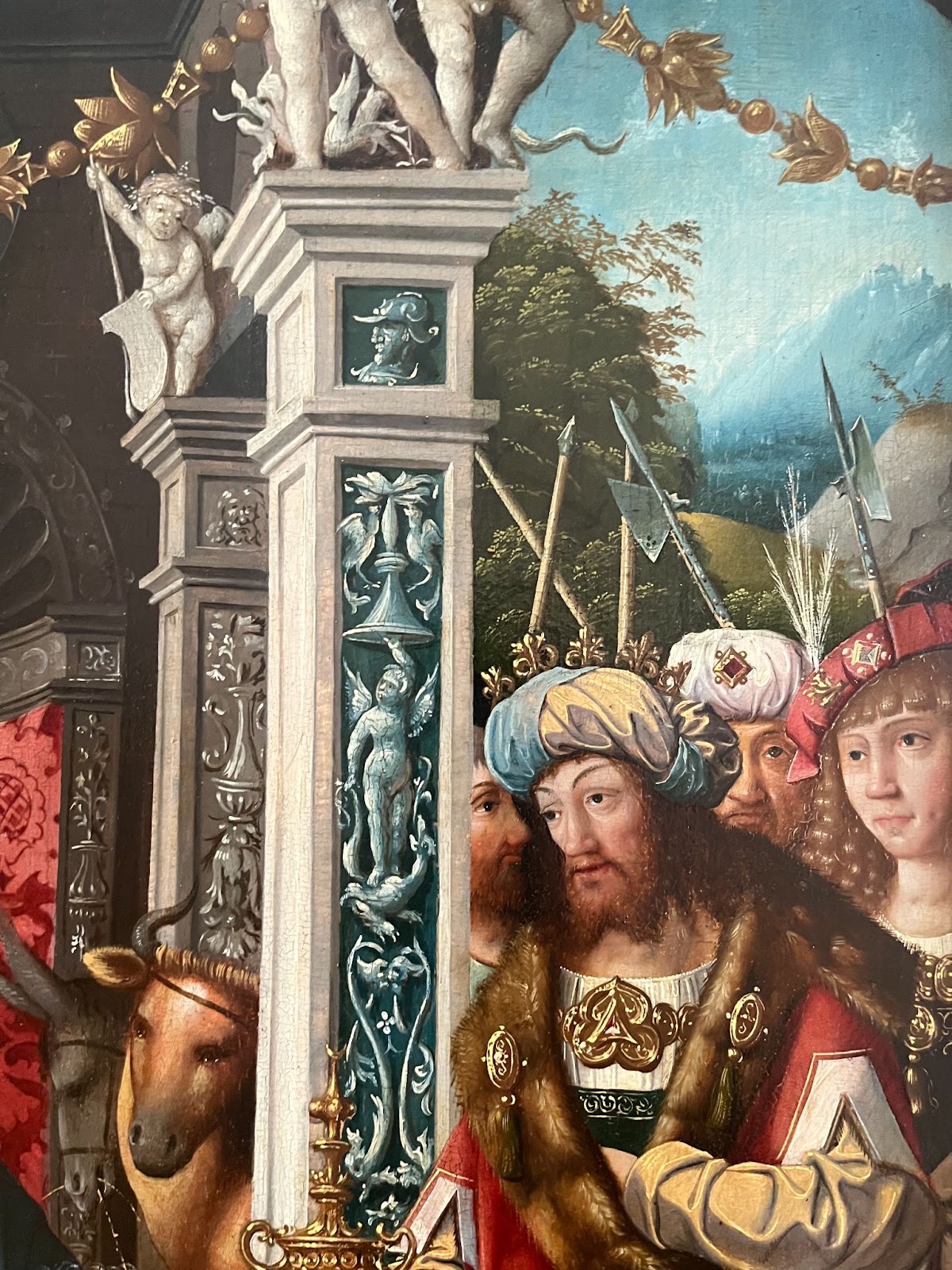

I then selected flowers and plant material for my arrangement from Mayesh Raleigh. Using their Flower Library, I searched for plants similar in color to those identified in my palette and available for purchase in March, when Art in Bloom regularly occurs. Joseph Barnes aided me in narrowing down flower choices.
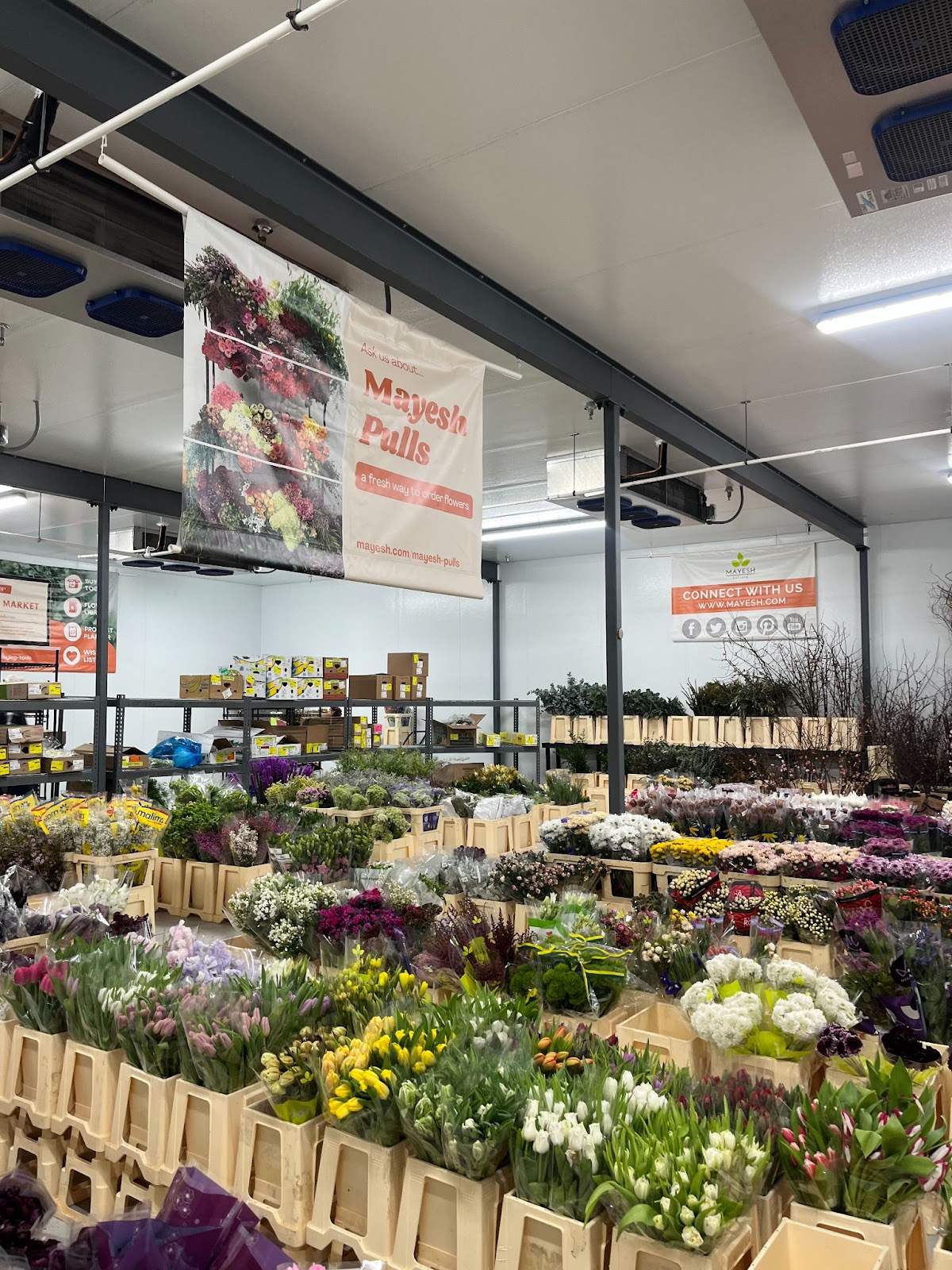
To aid me further, I learned more about the general principles of floral design. I watched YouTube tutorials led by florists on how to produce different types of arrangements, how to select a vase or vessel, and how to structure an arrangement using wire and other materials. I read books, like Ikebana Unbound: A Modern Approach to the Ancient Japanese Art of Flower Arranging and Flower Love: Lush Floral Arrangements for the Heart and Home. To test how long an arrangement would last and practice my hands-on design skills, I constructed arrangements at home with flowers from Trader Joe’s and later with Mayesh florals in the DSA space in DH Hill Library.
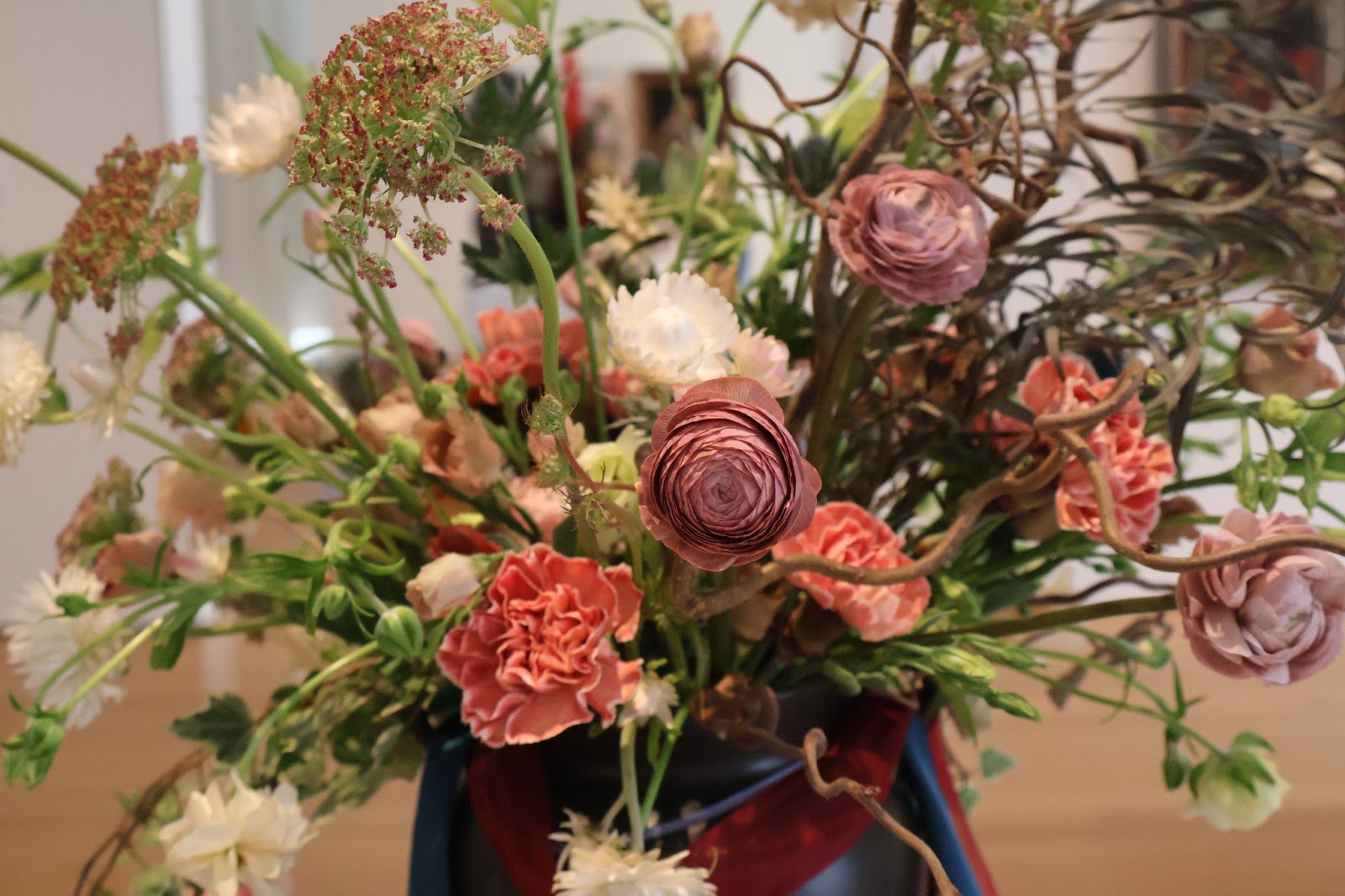
Yet, the actuality of using flowers within a data physicalization was interesting because while I used plants and flowers identified as “brown” to align with the palette of the painting, these were largely not brown. Dyed-brown ranunculus and light brown lisianthus are far more mauve-pink. Chocolate Queen Anne’s Lace is also a purple-brown, while tinted brown carnations are almost pale salmon with rust veining. A hazelnut branch is indeed hazelnut brown, but even those branches started to bear green leaves as they sat in water for the installation.
As living things, flowers often refuse to perform the way we might want them to. Art in Bloom’s living-and-dying installations are so wildly popular for all the ways that they do not follow the rules and conventions of traditional art and data: they need water and sunlight, they are perishable, they smell, they need to be cared for and tended to, they move and shift, drop and die. In doing so, they foster community, excitement, and joy as folks re-engage with and reimagine the art that the floral pieces are based upon. Data points, like art, signify a moment, a story to be told, something to be analyzed and considered. At Art in Bloom, attendees and designers are encouraged to use existing art and data to tell new stories and create new data points to share.
Arranging Data
For the week of Art in Bloom, it was a daily marathon of pruning, arranging, watering, perfecting, styling– and wilting, drying, decaying, and dying. I spent my mornings tending to my arrangement, replacing expired blooms with fresh ones, carefully replenishing water, and silently wishing my arrangement wouldn’t fall apart throughout the day as it faced heated air, crowds, and dark lighting. I found myself hoping that people wouldn’t think my arrangement–and my goal to engage in Art in Bloom through this bridge of data science linking art and flowers– was silly, absurd, or superfluous.
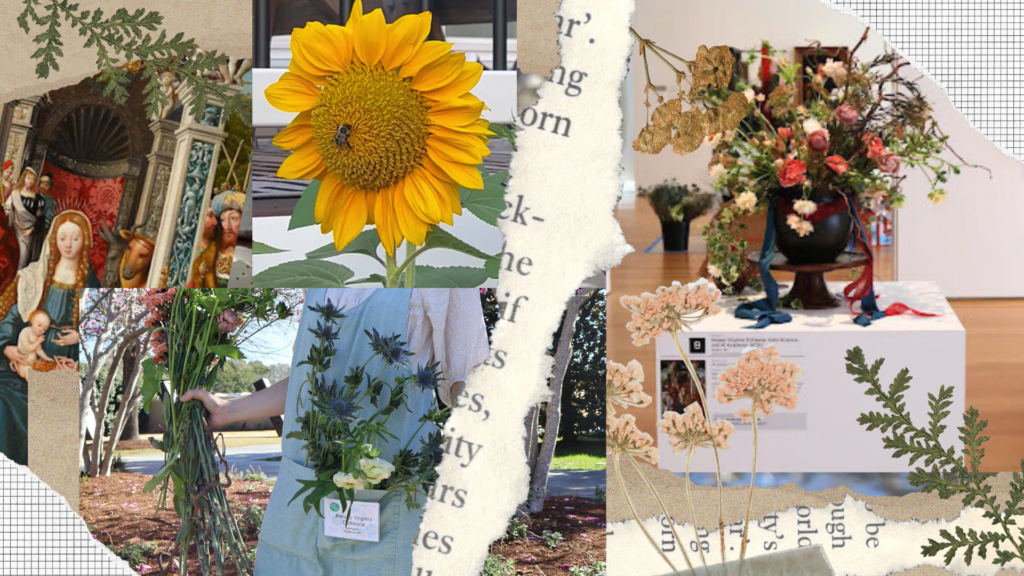
During the event, artists and designers would ask me about my connections to data science, how I went about making my piece from this angle, and what career or college advice I might offer prospective data science students. My work was opening the door for conversations between people about processes, ideas, questions, perspectives, and more, just as art itself does.
Having done this work and labor of creativity and data science, I hope that the perception and associations of data science, what it can do, who can do it, and what it looks like, may have shifted to those that take into account the variability and subjectivity of data, how it is shared, how it is understood, and how we engage with it. Data science can be tangible, sensory, and beautiful. As the DSA actionizes, data science can be done by anyone, and it can be engaged with by anyone.
To learn more about Dufresne’s research, contact her at kvdowns@ncsu.edu.
Additional Resources and Reading:
- Categories:
